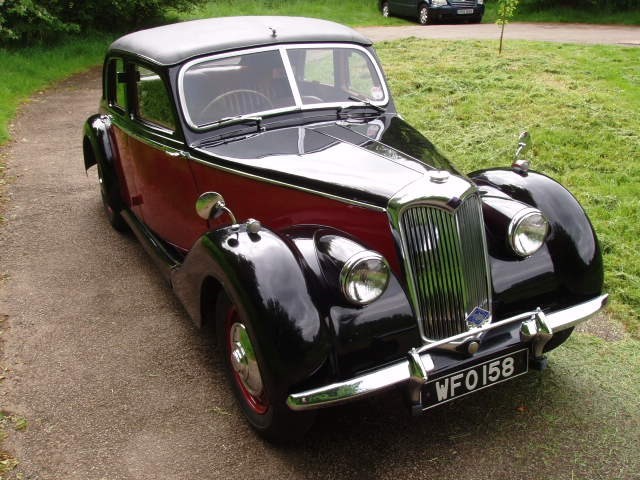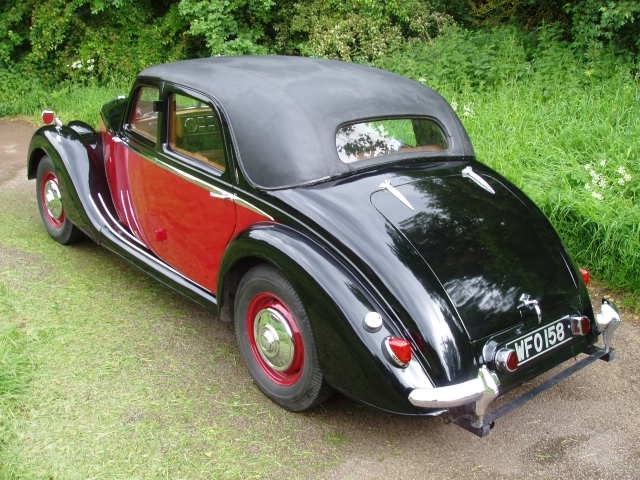Pre-war looks married to post-war road manners. Here's how to buy a peach of a Riley RM, not a lemon.
It may look old school with those running boards and exposed wings, but the Riley RM was Britain's first new post-war car that wasn't just a rehashed Thirties design. As a result, these stylish saloons are surprisingly modern to drive, with their twin-cam engines, torsion bar front suspension and rack-and-pinion steering.

WHAT TO LOOK FOR
Bodywork
Rotten steel and timber are common, so scrutinise the base of each A- and B-post closely, together with the rear window surround, sills and roof frame. All these are timber, and in the case of the roof it can be tricky working out what's going on as it's covered in vinyl cloth. Underneath is a perforated steel panel topped with wadding covered in hessian. This absorbs moisture, rotting the structure beneath and the vinyl cloth shrinks with age, aloowing water in and accelerating the deterioration. However, degradation of the cxar's structure and fixtures can look like shrinkage, so be sure to press on the various pillars as well as the main roof panel, feeling for any crumbling below.
The timber structure is clothed in steel panels, although some bonnet tops are aluminium and - periodically until 1953 - so were some bonnet side panels. All 2 1/2 litre cars got steel panels here while 1 1/2 models got aluminium or steel. Start by looking at the door bottoms and C-posts, then inspect the boot aperture and floor edges, along with the spare wheel compartment near edge.
Oily bits
Two different four-cylinder twin-cam engines were fitted to the RM, displacing either 1496cc or 2443cc. Cars with the smaller unit have a dark blue grille badge, 2 1/2 litre cars got a light blue badge. Checks for the usual wear-related rattles and knocks, while blue exhaustsmoke under acceleration points to oil being burned. The oil should be changed every 1500-3000 miles; keep an eye on the pressure gauge to see how healthy the engine is. Expect 40psi at 40mph on a 1 1/2 litre car, or 30psi on a 2 1/2 litre. Signifcantly lower readings suggest wear; much higher, and the oilways are clogged up or the relief valve is set incorrectly.
Check 2 1/2 litre cars for a blown head gasket and ensure it doesn't run hot once up to temperature - it could be a build up of sludge in the block. A high-gain radiator is not necessarily the answer due to the fan design, although many cars have one by now. If yours doesn't, budget on spending £150 to have the radiator re-cored. Also check the coolant-heated inlet manifold on a 2 1/2litre engine, whcih is prone to a leaking frost-damaged water jacket, whether the system is drained or not, leading to leaks. The four-speed manual gearbox is strong but a discernible rumbling signifies a worn layshaft. Also listen out for grumbling bearings, while a loud whine suggests tired gears. All cars feature a floor-mounted gear change, apart from early Roadsters (RMC), which have a column change. These contain a mass of linkages - wear here creates a vague gear change. Rebushing everything is likely to work wonders and it's aeasy to do although you'll need to have everything made in a machine shop first. Adjustment of the clutch rod mechanism can be fiddly, which is why clutch drag is so common, so check for slipping and judder as you pull away. This is common on the 2 1/2 litre cars, signifying tired engine mountings or inappropriate steady cable rubber, but replacements are cheap and easy to fit. Oil leaks from RMA and RMB rear axles are not uncommon, ao make sure there isn't lubricant all over the car's underside. Pulling to one side under braking can signify oil contamination to the rear brakes.
The steering rack is durable, but a new rack from the club (£174 without the pinion) should cure any excess play. The suspension lasts well if maintained properly, but there are eight greasing points including the track rod ends (plus one on post-1952 models' steering housing) which are sometimes neglected. Check for play in thje kingpins by jacking the car up at the front, putting a heel bar under the tyre, then looking for excess movement sa the wheel is moved up and down. The rear leaf springs also sag with age, while the lever arm damper lower links on pre-1951 2 1/2 litre cars can become disconnected, although repair is straightforward. Telescopic dampers were used from late 1951 and rarely give trouble. Rileys used a hydromechanical braking system until the introduction of the RME and RMF in 1952, at which point it was replaced by a fully hydraulic setup. Both systems use drums all round and while the earlier system is well up to the job, the later setup is even better. Both systems are reliable, so just make the usual checks for leaks, wear and poor adjustment.
Trim and electrics
Look for stitching that's falling apart, tears in the leather and delaminating wood. A professional retrim is very costly. The club recommends kits from Woolies to revive a tired interior on a DIY basis.
There's a fair bit of exterior brightwork, but the only real problems here involv pitting and missing items. A fair bit of trim is still available used, however, and doesn't cost the earth.
OUR VERDICT
Easy to maintain yourself on a DIY basis and capable of a useful turn of speed, the RM is also affordable and widely available, as well as enjoying a level of parts availability that's little short of astonishing. If you want pre-war elegance with post-war practicality, you've found the perfect car.

